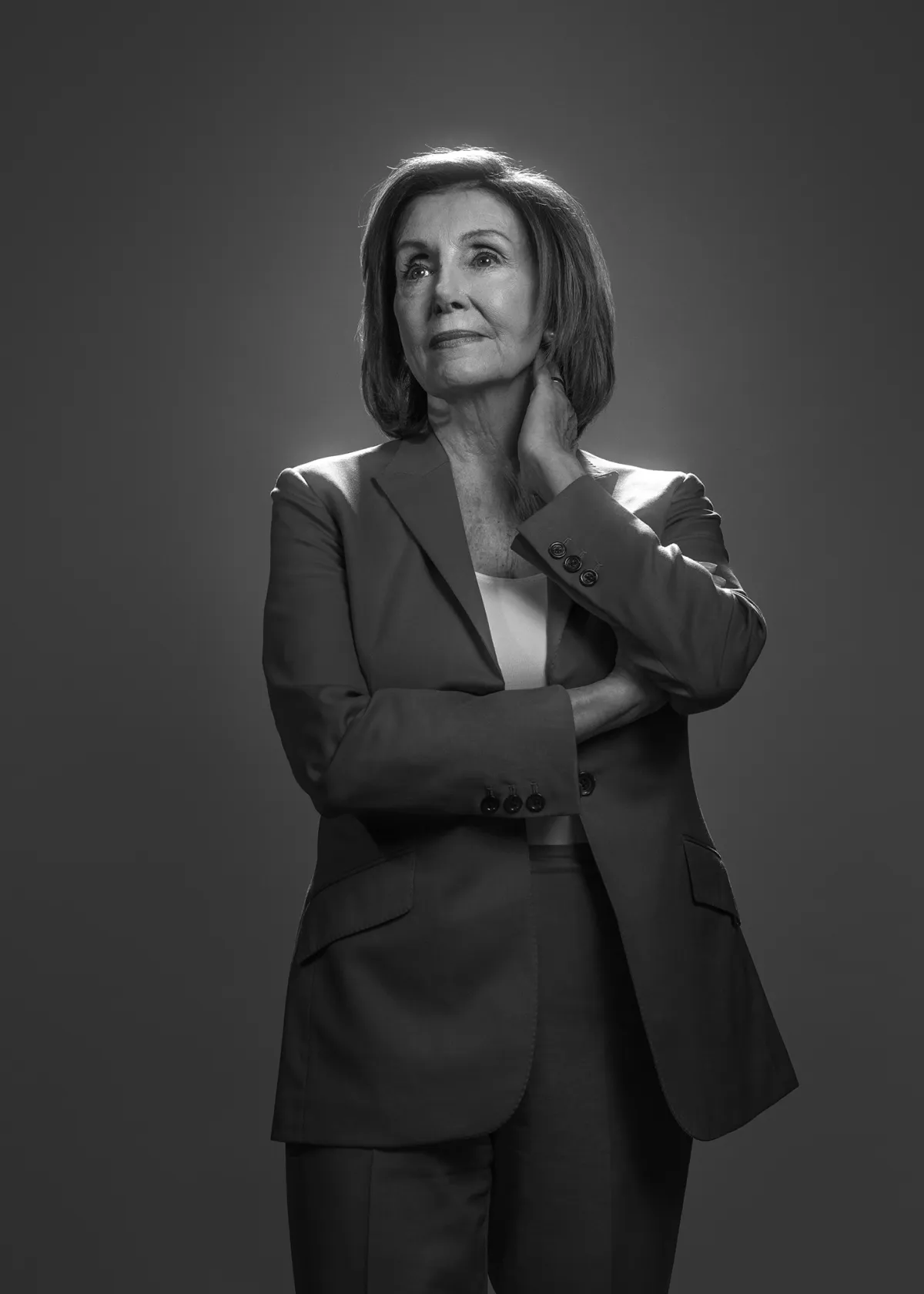Copyright time

When Nancy Pelosi arrived in Congress in 1987, not much was expected of her. At the time the 47-year-old activist and housewife won a special election to represent San Francisco, there were just 25 other women among the 535 members of the House and Senate—many of them widows who’d taken their husband’s place. With her rich husband and expensive clothes, Pelosi was assumed by many of her new colleagues to be a dilettante or even a bimbo. Nearly 40 years later, Pelosi will leave office as the most powerful woman in congressional history, one of the most powerful in American history, and surely the most skilled and accomplished congressional leader of her era. On Thursday, the 85-year-old former House Speaker announced that she would not seek re-election after 20 terms. Born and raised in Baltimore, Pelosi came from a political family—her father was a member of Congress and mayor of Baltimore who ruled a Little Italy political machine. But she was not groomed for a political career; that was for her five older brothers. It was her mother’s example, she would always point out, that inspired her as much as her father’s: the no-nonsense woman who steered the family political operation, maintaining the “favor file” of patronage and welfare, mobilizing the troops at election time, all while raising a brood of children and keeping a pot of stew simmering on the stove. It was her mother, Annunciata d’Alesandro—”Big Nancy”—who supported Nancy leaving Baltimore to go to college in D.C. over her father’s objections. There she met Paul Pelosi, a fellow Italian-American Democrat from a political family. She followed Paul, a financier, to New York and then his hometown of San Francisco, birthing five children in the space of six years and running the household with military precision and a dollop of Catholic guilt. Read More: Nancy Pelosi Doesn't Care What You Think of Her. She was always active in Democratic politics, from leafleting for candidates while pushing a stroller around Manhattan to protesting human-rights abuses overseas at San Francisco City Hall. After the family settled in a tony San Francisco neighborhood, Pelosi became a well-known operative and fundraiser, helping land and run the 1984 Democratic convention in the city, serving as finance chair of the party’s Senate committee and even making a failed bid to run the Democratic National Committee. But she only ran for office because of a deathbed promise. In 1987, the San Francisco congressional seat was held by Sala Burton, widow of Phil Burton, the crusading 1970s liberal who dominated California politics. Sala Burton summoned her friend Pelosi to her side as she was dying of cancer and made her promise to run for the seat. Pelosi entered a fractious 14-way race, billing herself as “A Voice That Will Be Heard.” Arriving in Washington in an era of Democratic congressional dominance, she was eager to prove herself, immersing herself in policy and committee work and making unlikely allies, such as the crusty war vet John Murtha, a Pennsylvania congressman from the party’s conservative wing. She scored a series of unlikely policy victories on issues from the AIDS crisis to human rights in China. Pelosi initially figured she might serve for a decade or so and then go on to other things. But by the late 1990s, in the wake of the 1994 Republican House takeover, she had concluded that the men around her didn’t know anything she didn’t—there was no “special sauce”—and indeed, didn’t know how to win. It would not be the last time she saw that if she wanted something done, she would have to do it herself. Overcoming the sexist murmurings of some of her colleagues (“Who said she could run?” one grumbled), she ran for leadership, becoming the first woman House Whip in 2001 and ascending to minority leader in 2003. Pelosi became one of the most prominent opponents of then-President George W. Bush’s invasion of Iraq at a time when leading Democrats were lining up behind it, including Joe Biden, Hillary Clinton, John Kerry, and then-Senate leader Tom Daschle. While other Democrats feared appearing soft on terrorism, Pelosi, then the top Democrat on the House Intelligence Committee, didn’t believe Bush had proven his case for the war. In 2006, riding voters’ increasing opposition to the war, she partnered with then-Rep. Rahm Emanuel to win back the House for the Democrats, recruiting moderate candidates with national-security credentials and promulgating a pocketbook-focused policy platform. In January 2007, she became the first woman Speaker in American history. After Barack Obama was elected, Pelosi became his essential legislative partner, helping deliver stimulus funding, Obamacare, and Wall Street reform. She also became the GOP’s chief bogeyman: they were eager to make the polarizing San Francisco liberal the face of the Democratic Party, plastering her face in hundreds of millions of dollars of television ads across the country. Read More: How Nancy Pelosi Saved the Affordable Care Act. The backlash to Obamacare helped power Republicans to the House majority in 2010. Yet rather than step down then—or in 2012, or 2014, or 2016—she insisted on staying on, having concluded that there was no one else as well suited to do what needed to be done: raising hundreds of millions of dollars for Democratic campaigns, keeping her fractious party caucus in line, negotiating budgets and legislation with the GOP. Meanwhile, the Republican men who held the speakership flailed through years of gridlock and shutdowns, complaining bitterly how hard the job was that Pelosi had made look easy. Whether or not you agree with her politics, few close observers would dispute that Pelosi was a master of her craft, a legislator of rare skill in an era where polarization and paralysis made it historically difficult to get anything done. One of the more surprising tributes to Pelosi on Thursday came from the right-wing Rep. Marjorie Taylor Greene, who said on CNN, “I will praise Nancy Pelosi. She had an incredible career for her party. I served under her speakership in my first term in Congress and I'm very impressed at her ability to get things done.” (In 2021, the Pelosi-led House stripped Greene of her committee assignments, in part for social-media posts calling for Pelosi’s execution.) But by the time President Trump was first elected, many saw Pelosi as a liability for her party. There were rising calls for her to move on and make way for a fresh face, even after the 2018 wave put Democrats back in control of the House. She won back the gavel anyway, and her party was grateful for her acumen as she became the chief foil to Trump—interrupting him in meetings, ripping up his State of the Union address, and orchestrating his two first-term impeachments. Read More: Why Nancy Pelosi Is Going All-In Against Trump. After Joe Biden won the 2020 election, Pelosi was again a Democratic president’s essential partner, steering massive spending legislation through Congress on tough party-line votes. (In September 2021, cameras captured her on the phone on the sidelines of the Congressional Baseball Game; it turned out she was haranguing then-Sen. Joe Manchin to try to get him on board with the Build Back Better Act.) Last year, when it was evident to everyone except Biden that he needed to drop out of the presidential race, Pelosi was the rare leader with the stature and gumption to get him to do what needed to be done. Her maneuvering ruined their long relationship—they didn’t speak for months afterward—but inspired gratitude from many Democrats who believed she’d put the country ahead of personal loyalty. Pelosi stepped down from congressional leadership in 2022, but she didn’t relinquish her seat, in part, she said at the time, because she “couldn’t give them that satisfaction” after her husband was bludgeoned with a hammer by a crazed intruder. Instead, the 85-year-old leaves on her own terms, her faculties intact, a generation of Democrats saluting her legacy. Read More: Nancy Pelosi On the Not-Quite-End of An Era. That legacy will consist, of course, of the Affordable Care Act—for years after the landmark health-care bill’s passage, she worked to protect it from GOP attempts to repeal it—and the many other major pieces of legislation she shepherded, as well as the breakthroughs she achieved for women. When Pelosi became speaker for the second time in 2019, it was the first time the number of women in the House crossed the 100 mark, many of them candidates she recruited and mentored. Two of the women elected to Congress that year, Mikie Sherrill and Abigail Spanberger, won gubernatorial elections this week. Pelosi’s tangles with Trump over the past decade will likely also be part of her entry in the history books. Earlier this week, she called him “a vile creature,” and on Thursday he returned the favor, terming her “an evil woman who did a poor job.” Pelosi must also be considered the avatar of a Democratic Party that has increasingly become the party of coastal elites and their cultural concerns, such as gay rights and environmentalism, and has less and less purchase with the heartland working-class. It seems unlikely that Congress will soon see the likes of Pelosi again. She departs alongside former GOP Senate leader Mitch McConnell, another generational figure renowned for his skills as a tactician who nonetheless aged out of relevance in today’s turbulent times. Their replacements, Hakeem Jeffries and John Thune, are capable enough but lack Pelosi and McConnell’s canny ruthlessness. Then again, at the beginning, no one expected Pelosi to emerge as the giant she became.



